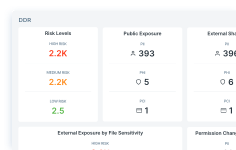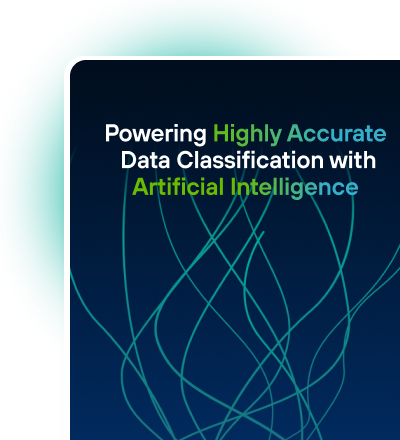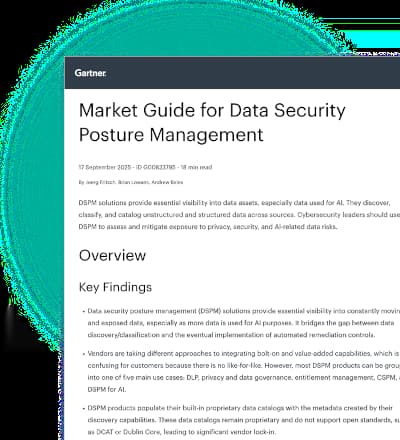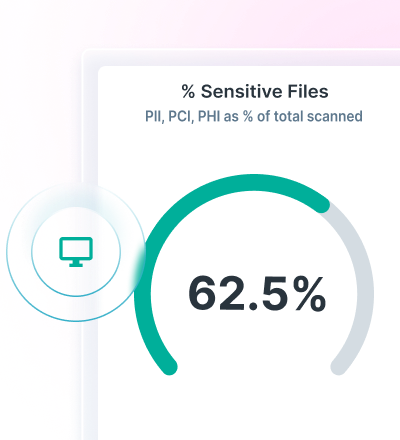How to Detect Shadow IT and Safeguard Critical Data
0 Minuten Lesezeit

Brandon Keller
Few things are hotter in tech than Generative AI (GenAI) apps. What launched as a buzzy piece of tech a few years ago has essentially become a mainstream commodity for many users.
GenAI apps like ChatGPT, Copilot and Gemini are changing enterprise productivity. While these apps help employees work faster, they also put sensitive data at risk. And because workplace usage of AI software is often unsanctioned, it falls into the category of shadow IT. Many companies lack methods to gain visibility and control over critical data that employees might input into AI apps.
Before digging into how to prevent shadow IT threats, let’s explore the basics and some common risks.
What is Shadow IT?
Shadow IT is the use of information technology systems, devices, software, applications and services without explicit IT department approval.
Using shadow IT can be as simple as an employee using a personal Dropbox for file management instead of company-approved file storage software. Another popular shadow IT use case is the unapproved corporate use of generative AI and AI software. You can refer to that type of tech usage as shadow AI.
Using unsanctioned AI software like Copilot or ChatGPT puts sensitive data at risk in a number of ways.
What are the Risks of Shadow IT?
Sure, shadow IT and AI tools might help employees do tasks faster, but they come at the cost of higher cybersecurity risk. Below are a few common risks of shadow IT:
- Data Loss: Employees using unauthorized GenAI tools can decrease security teams' visibility and control over web services and data flow, heightening the risk of data breaches and leaks.
- Non-Compliance: Unauthorized tool usage by employees can lead to non-compliance, potentially resulting in legal penalties and fines. Additionally, shadow IT can make it more difficult to demonstrate data compliance to auditors.
- Insider Threats: Unauthorized software is challenging to monitor and protect, which increases the risk of software and data misuse. Employees could misuse these tools to take sensitive data when they exit the company.
- Complicated IT Environments: Employees using unsanctioned software complicates security teams' ability to manage security infrastructures, contributing to more time spent trying to safeguard critical data.
Risks like these aren’t going away, so IT teams everywhere are looking for the right solution to secure users and protect critical data. Taking control of shadow IT starts with solutions that help gain visibility into it.
How to Detect Shadow IT
When it comes to stopping data loss and other threats on the web caused by shadow IT, we recommend Forcepoint Web Security (SWG) time and time again.
Our SWG helps secure users and data with industry-leading data loss prevention and threat protection. It also provides full visibility and control of sensitive data on the web to help stop potential shadow IT-related data leaks. More specifically, it identifies unsanctioned web and SaaS activity to help safeguard emerging AI applications.
Learn more about how Forcepoint Web Security shines a light on Shadow IT usage and helps support Zero Trust initiatives. Talk to an expert today.

Brandon Keller
Mehr Artikel lesen von Brandon KellerBrandon is a Multimedia Content Marketer, driving content strategy and development across Forcepoint platforms. He applies his enterprise marketing experience to help organizations adopt industry-leading security solutions.
- Forrester: Securing Generative AI
In dem Artikel
- Forrester: Securing Generative AIBericht des Analysten anzeigen
X-Labs
Get insight, analysis & news straight to your inbox

Auf den Punkt
Cybersicherheit
Ein Podcast, der die neuesten Trends und Themen in der Welt der Cybersicherheit behandelt
Jetzt anhören









